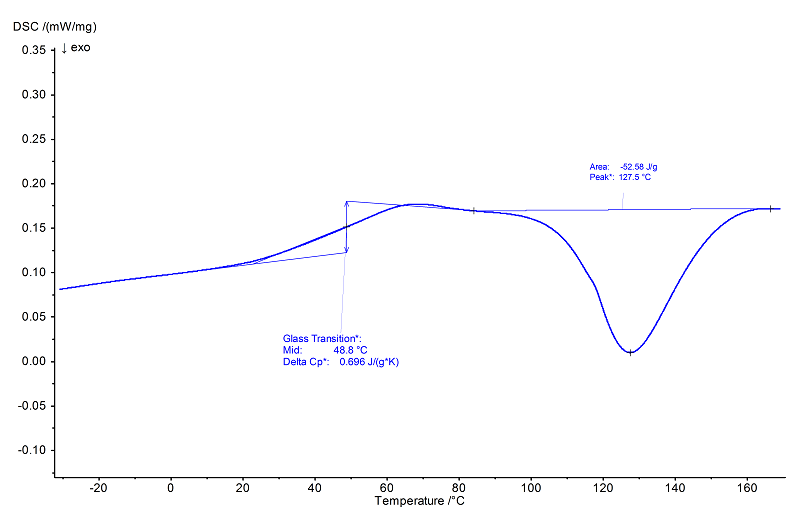UF: Urea-formaldehyde resin
- Short Name
- UF
- Name
- Urea-formaldehyde resin
- Group
- TS - Thermosets
- General Properties
- Chemical Formula
- Structural Formula
-

Properties
- Glass Transition Temperature
- 60 to 110 °C
- Melting Temperature
- - °C
- Melting Enthalpy
- - J/g
- Decomposition Temperature
- 260 to 355 °C
- Young's Modulus
- 7000 to 10500 MPa
- Coefficient of Linear Thermal Expansion
- 40 to 60 *10¯6/K
- Specific Heat Capacity
- 1.2 to 1.3 J/(g*K)
- Thermal Conductivity
- 0.35 to 0.40 W/(m*K)
- Density
- 1.5 g/cm³
- Morphology
- Thermoset
- General properties
- High strength. High scratch resistance. Very good electrical insulating properties. Light resistant
- Processing
- Compression, injection molding, transfer molding
- Applications
- Building industry (binder for plywood). Electrical industry (e.g., plugs, light switches). Sanitary area (e.g., toilet seats). Caps for cosmetics
Internet Links
NETZSCH Measurements
- Instrument
- DSC 204 F1 Phoenix®
- Sample Mass
- 24.04 mg
- Isothermal Phase
- 8 min
- Heating/Colling Rates
- 5 K/min heating/10 K/min cooling
- Crucible
- High-pressure steel crucibles, closed
- Atmosphere
- N2 (40 ml/min)

Evaluation
In the 1st heating (blue), a glass transition occurred at 45°C (midpoint), overlapped by a small endothermal relaxation effect which is followed by a broad exothermal reaction peak due to the curing reaction (peak temperature 128°C, reaction enthalpy 53 J/g). After controlled cooling, only a glass transition with a midpoint temperature of 104°C and a step height (Δcp) of 0.14 J/(g·K) can be seen in the 2nd heating (green). This Tg is also overlapped by a relaxation effect.
By means of TM-DSC (temperature-modulated DSC), it is possible to separate the glass transition from the relaxation endotherm and the curing exotherm.
By means of TM-DSC (temperature-modulated DSC), it is possible to separate the glass transition from the relaxation endotherm and the curing exotherm.